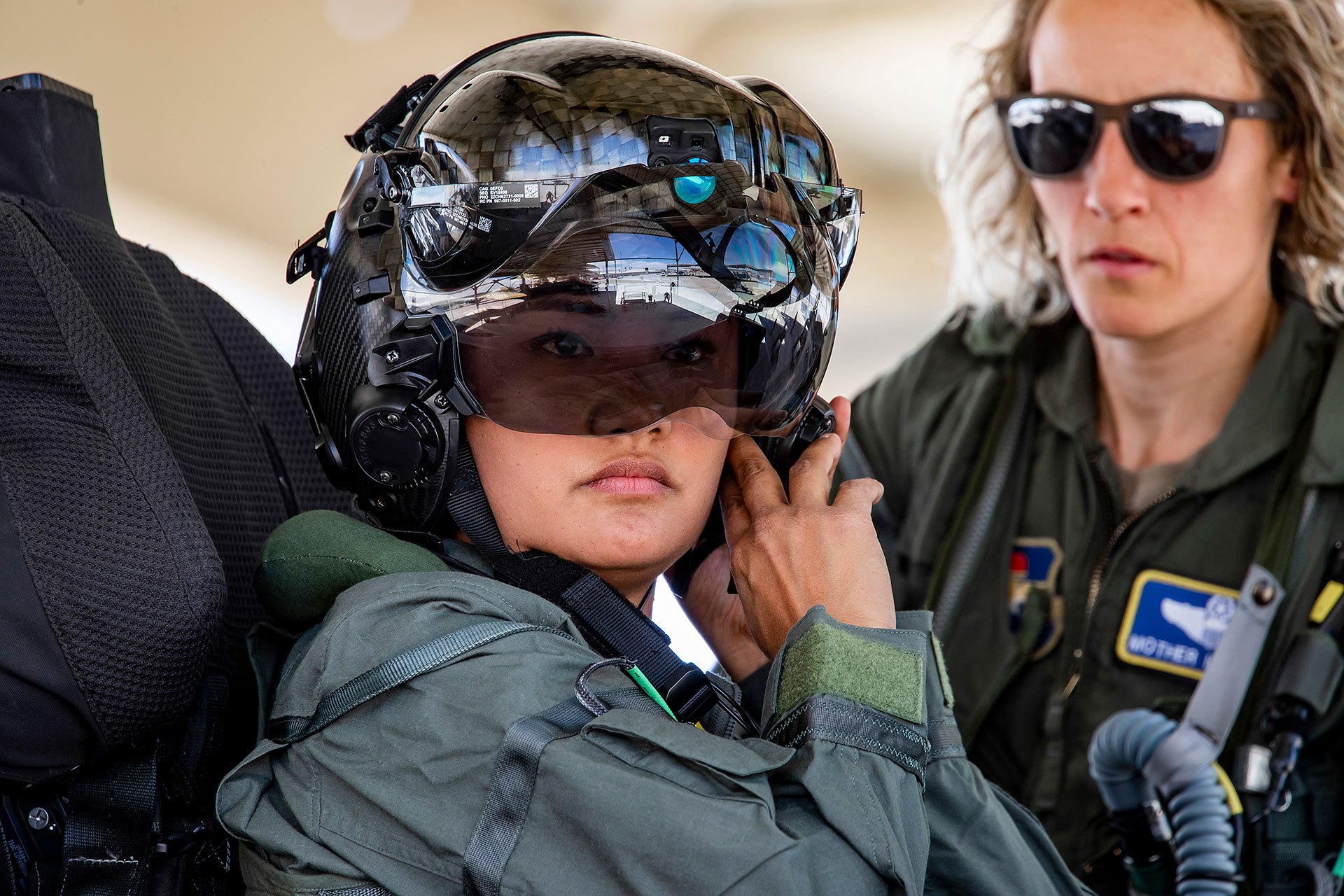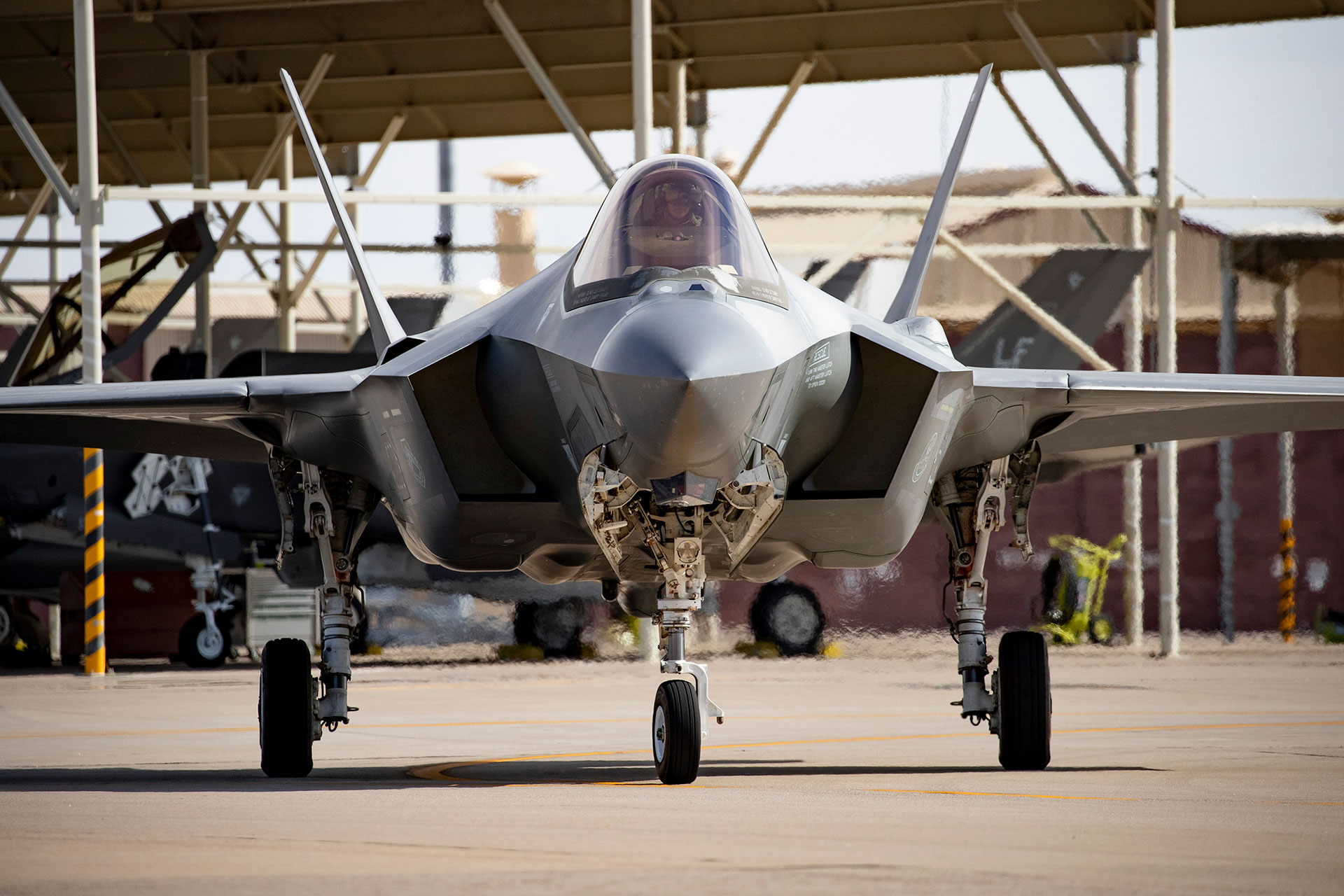On June 7, Monessa “Siren” Balzhiser broke the glass ceiling when she flew the venerable F-35 Lightning II as Lockheed Martin’s first female Production and Training Pilot for the stealth fighter.
Balzhiser was also credited with being the first female Filipina F-16 Fighter Pilot of the US Air Force. She has now joined the ranks of an elite group of female F-35 pilots.
The official Twitter account, F-35 Lightning II posted on the June 28, “Monessa “Siren” Balzhiser, @Lockheed Martin’s first female F35 production and training pilot, recently took flight @Luke AFB”.
The fact that Balzhiser agreed to take on the challenge of flying the world’s most advanced 5th Generation fighter aircraft, is admirable. It is a moment of pride and faith for every woman that comes across her story. Such accomplishments are a reminder of the collective success the movement for gender equality has gained through the years.
Balzhiser joined Lockheed Martin in 2018 and was eventually selected to fly the F-16 as a production and training pilot. When she was asked if she was interested in flying the F-35, she initially thought it was a joke, but once the shock and humor subsided, she took up the challenge immediately.

“I’m absolutely humbled and honored to represent Lockheed Martin and fly the F-16 and the F-35, two of the best fighter jets out there,” she said. “It was a little bit shocking at first, but once I settled down, I was in awe—I’m still in awe.”
The F-35 Joint Strike Fighter is considered the world’s most expensive weapons program, which will cost the US military $1.5 trillion until it is phased out in 2020.
Balzhiser took her first flight in the F-35 at Luke Air Force with her mentor and F-35 flight instructor, Lt. Col. Kristin “Mother” Hubbard, flying as her wingman.
“The jet really doesn’t know if a pilot is male or female—it doesn’t. It just expects you to perform the way you need to,” said Balzhiser. “Many people don’t realize that females are doing this in the industry—we’re doing it out in the operational world of the fighter communities.”
Commenting on the current state of hegemonic masculinity – of its persistent existence – the article on the website of Lockheed Martin that covered her story says interestingly, “While the number of female F-35 pilots in the community is steadily growing, there is still the misconception that flying fighters is not accessible to women in the industry.”
‘It is extremely easy to fly’….“It was amazing and a bit surreal,” she said.
“If you can imagine every emotion that you can think of happening in one location—nervousness when stepping out to the jet, to the pure excitement of being strapped into one of the most powerful fighter jets in the world, to scared of messing up, to a huge adrenaline rush—it was just all encompassed in my one little glass cockpit.”
The major difference between flying the F-35 and F-16 is that a pilot’s first flight in the F-35 is to be undertaken on their own. In preparation for her first flight, Balzhiser spent the six weeks prior with the 56th Training Squadron and 61st Fighter Squadron as part of a Senior Officer Course. She went through rigorous amounts of academics for each system on the F-35 and 12 simulator scenarios.
Along with having to handle all the sensor capabilities in the F-35, Balzisher had to demonstrate her ability to identify and respond to any kind of situation requiring emergency procedures. The extensive training eventually culminated into a check ride in the simulator from a squadron evaluation pilot. Once Balzhiser passed her check ride, she was cleared for take-off.

“My initial thought once I took off of the ground was, in one word, “WHOA.” The biggest transition that I am still getting used to in the jet is how smart the F-35 is—Its ability to engage and disseminate the information that it’s gathering and then display it back to the pilot – it takes a lot of focus and multitasking ability. With my background in the F-16 and the number of flying hours that I had, flying the F-35 came naturally. It is extremely easy to fly.” she said.
Balzhiser was greeted back on the ground by her family, colleagues, and friends after having landed. As her daughter describes her achievement as ‘awesome’ and ‘cool’, it is women like her that show us the way forth.
Female F-35 Pilots
As of July 2020, there are 11 active-duty female F-35A pilots as compared to 286 active-duty male pilots flying the F-35 in the service. The US Navy currently has two female F-35C pilots, one is an instructor at the Strike Fighter Squadron 125, and the other is an F-35C weapons school instructor.
The Marine Corps has three female pilots currently flying the F-35. One full-time aviator and a student pilot fly the F-35B, while another student in the training pipeline flies the F-35C, according to service spokesman Capt Joseph Butterfield.
Last month, Capt. Emily “Banzai” Thompson, also of the 388th, became the first woman to fly the F-35A Lightning II in combat in the Middle East. She said, “I think it’s a bright future, there is a number of us already in the F-35 and I think the number is just going to continue to grow. It’s a very supportive community, it’s very open, I think the opportunity for women to really excel in the F-35 is definitely there.”
Major Kristin “BEO” Wolfe is the F-35 Demo Team’s first female commander. She has over 800 flight hours logged on the F-22 and F-35 spanning four and a half years of personal operation.
Air Force Lt. Col. Chritine Mau became the very first woman in the F-35 program in 2015 after previously flying F-15 jets.




